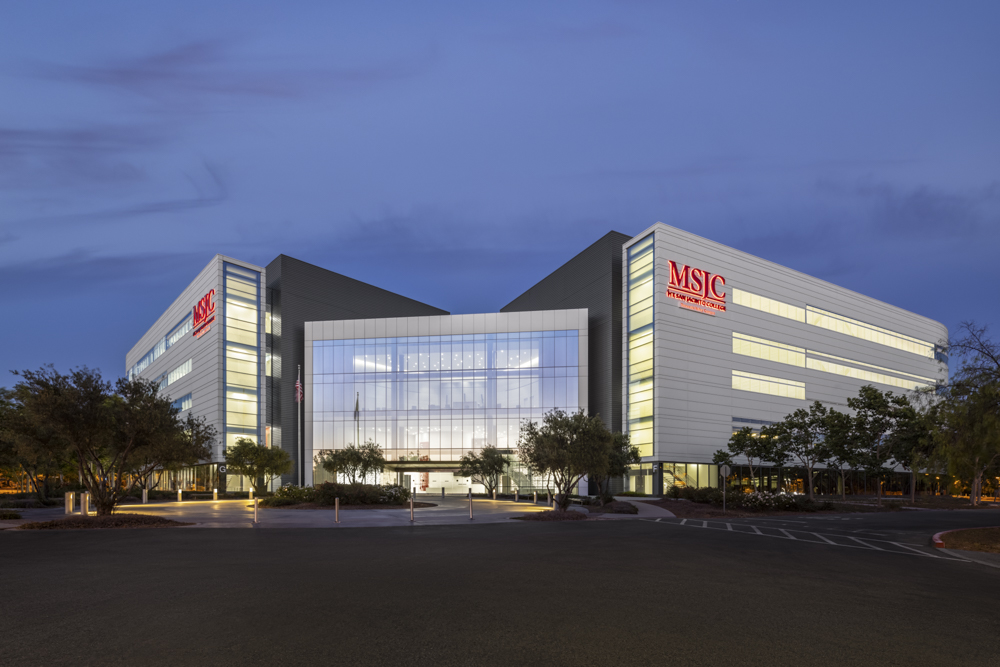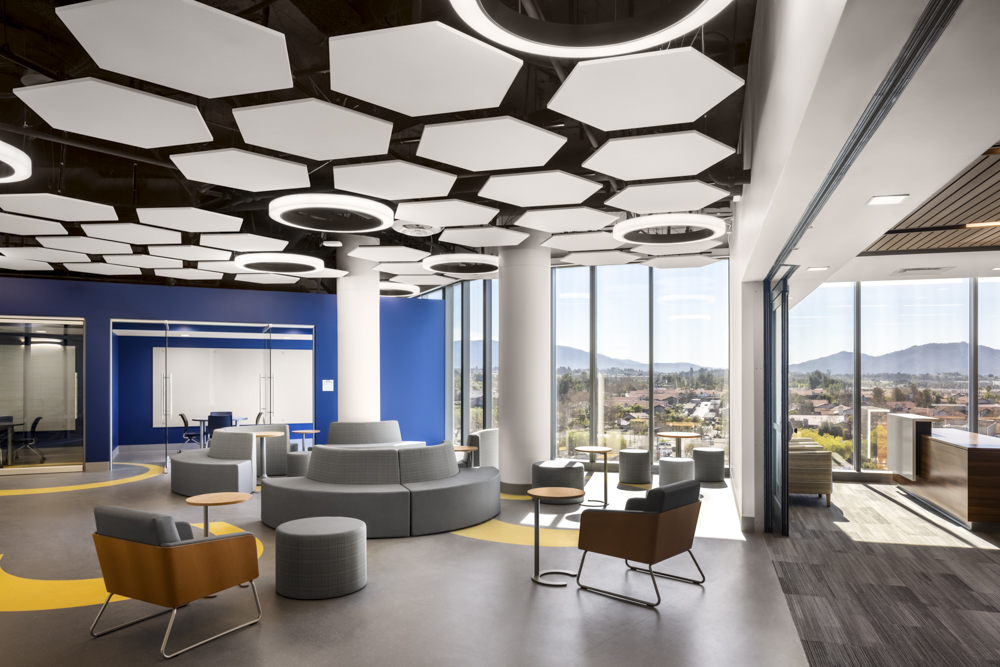Occasionally projects come along that allow us to revisit some of our favorite completed structures, and Mt. San Jacinto College (MJSC) gave us that opportunity when they purchased two office buildings at a biotech office park to create a new STEM oriented campus for their students. KPFF originally designed several structures on this campus, including two five-story office buildings and a central plant, that completed construction in 2007 for a medical device company. The original owner wished to move part of the business to the Midwest, and MSJC was able to take advantage of this real estate opportunity. As office buildings, the original seismic code compliance for these structures is quite different from the rigorous standards set by the Division of the State Architect (DSA) for all educational facilities in California.
In March 2018, MSJC purchased this 350,000-SF facility in Temecula to expand their facilities rapidly, rather than starting from a greenfield site. An additional building will be constructed around the existing structures. When all phases are complete, the campus will provide classrooms, science labs, and computer classrooms to students focused on careers in STEM. Amenities will also include a learning resource center, career center, library, health center, veterans center, bookstore, café, art studio and campus safety office. It will serve as a center for student life and services including enrollment, transfer office, counseling, and financial aid. MSJC provides access to higher education for residents of the Southwest Riverside County and serves about 27,000 students in a district covering 1,700 square miles from the San Gorgonio Pass to Temecula. Campus locations include San Jacinto, Menifee, Banning and now Temecula.
The challenge presented to our team was bringing office buildings, traditionally designed for life safety, up to the same demanding seismic standards for educational facilities required by the Field Act and subsequent code changes and Senate Bills, which are overseen by DSA. KPFF was brought to provide both structural and civil engineering services because of our intimate knowledge of the design of these particular buildings. The upgrades were not limited to the seismic retrofit, but also included renovation of the interiors at select locations. However, both MSJC and the architect, 19Six, wanted to re-use as much of the original building as possible to keep the project both economical and sustainable.
When we began to review the compliance issues for the structural upgrade, we started with an initial evaluation that was based on a traditional code-base prescriptive approach. This revealed the need for significant foundation strengthening that would be achieved by adding numerous micro piles. In essence, the building needed to be pinned down at the foundation to satisfy prescriptive uplift requirements. The construction effort behind adding micro piles would have involved the demolition or temporary removal of some very costly architectural and MEP components. In a code-base prescriptive approach we are limited in how we can address deficiencies. Therefore, to meet the goals of our client, we proposed a slightly radical approach for DSA buildings. Using advanced analysis techniques in a performance-based design framework, we could justify a more delicate retrofit approach by capturing the explicit and realistic seismic movement that already occurs without micro piles. With this model we could demonstrate the effects of a more subtle retrofit. Our design was peer reviewed by UCLA faculty members Dr. John Wallace and Dr. Sofia Gavridou. DSA has been very responsive, and helpful in our effort to utilize performance-based design. This will be the first project under their jurisdiction to be retrofitted using this advanced analysis technique.
For nonstructural components of the seismic upgrade, we conducted a comprehensive evaluation of existing parts to justify the adequacy of attachment and seismic bracing of elements like façades, ceilings, partitions, overhead utilities, as well as others. The level of complexity of this undertaking is more intricate because of the stringent guidelines DSA follow. For this effort, we developed an exploratory demolition program for components that were not visibly accessible as well as a testing program to investigate existing attachment and bracing systems for selected nonstructural components including ceilings, overhead utilities and MEP equipment.



